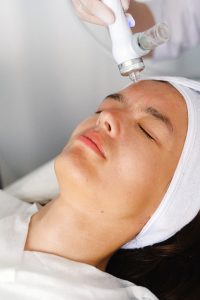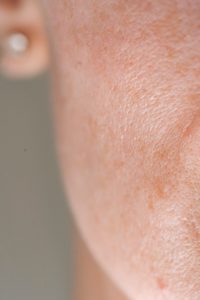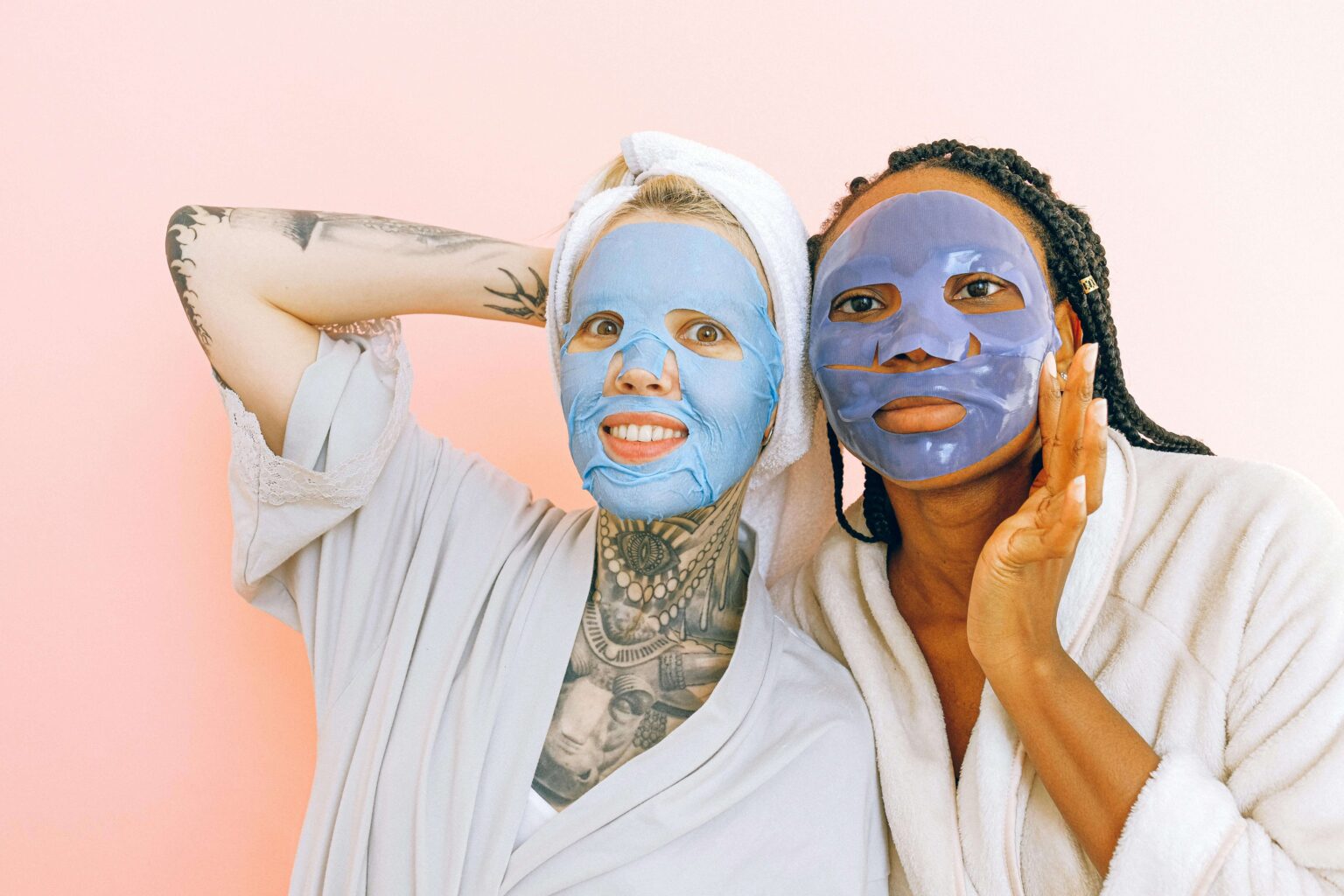A Guide to Different Types of Lasers and Which One is Right For Your Skin

Dr. Robert Anolik is an experienced cosmetic dermatologist and researcher in New York who has a great amount of knowledge about many different skin-improving technologies, such as lasers, radiofrequency, Botox, and fillers. He is also a board-certified dermatologist and clinical assistant professor of dermatology at the NYU School of Medicine. Not only is he one of our favorites, but he’s also received Elle Magazine’s Genius Award (they dubbed him “The Techie”), and was named a Rising Star in the New York Times Magazine “New York Super Doctors” feature. He’s often quoted in the consumer press, has authored dozens of academic articles, and lectures frequently on laser surgery, cosmetic dermatology, and Mohs surgery.
Your FAQ with Robert Anolik, M.D.
Are there lasers that help with wrinkles specifically? What lasers are best for skin texture issues? And do you think lasers overall are the best solution for crepe-iness?
Lasers that stimulate collagen growth and remodel existing collagen improve the appearance of wrinkles, texture, and crepe-iness. This is because these conditions are caused by weakening or irregular conformations of dermal collagen. Remodeled and new collagen normalizes this layer so that it is more organized, more evenly distributed, and deeper in depth.
A common misconception about lasers is that they remove the top layers of skin, which then become thin, shiny, and/or white. However, this belief likely originated from older methods of surface rejuvenation such as dermabrasion and deep chemical peels. These processes did carry the risk of removing all normal pigment cells (melanocytes), leaving those treated with an unusual sign of treatment. While I still see patients who were subjected to these treatments in earlier decades occasionally in my office today, fortunately laser technology has advanced significantly since then.
Rejuvenating lasers today have advanced to the point where they can penetrate the surface skin and stimulate collagen production, rather than just removing the top layer of skin. This is because resurfacing lasers are now fractional, meaning that they only affect small areas of skin at a time, leaving healthy cells untouched. This helps the skin heal quickly and reduces the risk of abnormal pigmentation.
“A common misconception about lasers is that they remove the top layers of skin, which then become thin, shiny, and/or white.”
Most lasers used for these strategies are fractional resurfacing lasers, which have limited downtime (generally from a few hours of pink and dryness to 4-5 days of pink and dryness). My currently used strategies include the non-ablative (non-wounding) Clear and Brilliant lasers and Fraxel Restore dual lasers. Not only do these stimulate the collagen, but they also allow for a surface exfoliation of the skin, getting rid of abnormal browning or dullness so that skin looks brighter overall.
For those seeking more powerful lasers, ablative models wound the skin surface and typically leave redness and scabs for about a week. After that, expect 3-4 weeks of pink skin before it regains its normal pigmentation. In the meantime, makeup can be used as camouflage since healing will have occurred by then. These stronger versions are generally utilized for concerns such as advanced aging signs, uneven texture injuries or deep wrinkles—think acne scars. My current favorite is Fraxel Repair.
In 2012, I took part in a clinical trial that not only proved these newer fractional laser treatments make for more beautiful skin, but healthier skin as well. These therapies help get rid of actinic keratoses which are precancers that have the potential to become squamous cell carcinomas.
“In 2012, I took part in a clinical trial that not only proved these newer fractional laser treatments make for more beautiful skin, but healthier skin as well. ”
A newer method for stimulating collagen is picosecond laser technology, which offers benefits for wrinkles, texture, and crepe-iness. It appeared after the FDA approval for picosecond laser treatment of pigment (notably tattoos). The Cynosure PicoSure laser is one example of this type of technology. Picosecond technology is the rate at which laser energy is delivered to the skin. In other words, a pulse of light with a set amount of energy will only last for one picosecond. clinical trials that I participated in were studying how these types of lasers interact when they pass through a diffractive lens. The lens provides areas of both high and low energy, similar to a fractional laser. Though there is always some level of low energy present on the surface of the skin, it is still unknown as to how this helps remodel and produce collagen. What interests me most is that the rapid delivery of laser light might stimulate a vibration in the surface of the skin, triggering a collagen response. I have since been involved in publications and lectures describing the clinical trials we performed. What makes this science even more interesting—and desirable for our patients—is the limited downtime. Usually, after treatment, the skin is just slightly pink for a few hours.

What lasers are good for reducing redness and evening out skin tone?
Many factors can result in skin looking red, like sun damage, genes, hormones, and rosacea. To medicate this issue people often use prescription drugs to lessen some of the swelling from within, including metronidazole creams and azeleic acids gels or sulfacetamide lotions. Although those are decent options for treating face redness at home none work as well as laser therapy does. Using laser wavelengths, we can heat and remove superficial blood vessels while leaving the surrounding structures untouched. These veins are only a cosmetic nuisance—they don’t serve any real purpose.
For years, the pulsed dye laser has been reducing redness better than any other method (for example: VBeam laser). In fact, it works so well that we can use it to make port wine stain birthmarks disappear (like the one on Gorbachev’s forehead). I mostly use it for fixing common causes of redness but also port wine stains and scar-related redness (sometimes acne scars, or surgical or traumatic scars). Depending on the condition, different strategies and treatments should be used; a cosmetic dermatologist will know which works best.
“In fact, it works so well that we can use it to make port wine stain birthmarks disappear (like the one on Gorbachev’s forehead)”
In addition to the older laser treatments, newer lasers have recently been developed that target larger blood vessels, e.g. KTP lasers (Example: ExcelV laser). These newer wavelengths are often more effective in targeting what we refer to as “red lines/squiggles” or “blue paths” on the face caused by telangiectasia and periorbital veins.
For patients with redness, I look for both diffuse redness as well as more pronounced red/blue capillaries. Usually, patients have both forms of redness. Therefore, to achieve optimal results, I use a pulsed dye laser and a KTP laser on the same day. The treatment is generally well-tolerated, feeling like a rubber band snaps over the face. Though unpleasant, it is not painful and only lasts a few seconds. Downtime consists of a few hours looking blotchy pink; however, many patients don’t feel the need to hide the appearance with makeup as it usually isn’t very obvious.
What are the best methods for tightening and fighting sagging skin?
The area of cosmetic dermatology specializing in technologies to improve sagging skin is developing rapidly, and I am lucky enough to be involved in several clinical trials for these strategies. Some of the techniques we are testing show promising results every day.
It’s critical to realize that not every technology is a laser. Lasers are merely light beams with one wavelength. Other sorts of energy can be used in cosmetic dermatology as well, like radiofrequency and ultrasound.
Through radiofrequency, we can tighten skin by heating the collagen fibers underneath it. By stimulating existing collagen and producing new collagen, our patients see a noticeable difference in their appearance. The procedure is much more comfortable than before due to vibrations in the handpiece and cooling methods that keep the surface skin at a comfortable temperature.
“The Ulthera system is one of the more popular ones that use sound waves safely under the skin to focus on specific depths”
The Ultrasound technology is newer and used for skin tightening and lifting. The Ulthera system is one of the more popular ones that use sound waves safely under the skin to focus on specific depths, in a similar way to how a magnifying lens can take sunlight and burn leaves by focusing light onto it. By using Ultherapy, ultrasound waves can be passed through the skin painlessly and focused on a specific point underneath the skin. At this point, the temperature rises and stimulates collagen remodeling and production. This procedure is usually uncomfortable, but like Thermage science, has become more comfortable with strategies that include lower energy delivery with more passes of the sound waves.
It’s essential to understand that Botox and fillers aren’t only for cosmetics; they can also help me lift skin. I’m able to place Botox into muscles with a downward pull, such as those below the forehead and above the eye. Proper placement here gives people a visible brow lift. (Don’t worry about raised eyebrows— these are prevented by careful placement of Botox in the forehead!) Additionally,Botox can be used in the chin to raise mouth corners. It can also be injected into the neck area to give jowls and neck bands lift.
“Expert doctors are necessary for these types of treatments so that too much filler doesn’t cause an overall full face”
Filler injections not only give the face a lift but also re-contour and support it to prevent sagging skin and jowls. Injection under facial muscles as well as areas where young faces once had more supportive bone and fat pads results in a natural-looking lift. Expert doctors are necessary for these types of treatments so that too much filler doesn’t cause an overall full face—which is not the goal.
While these experimentations are relatively new and growing in demand, I can’t say that the results will be as extreme as surgery. Of course, it also doesn’t come with the baggage of risks, scars, or permanency. Furthermore, I believe that by constantly repairing and producing collagen in the skin will gradually delay aging over time effectively since the foundations of our skin is newer and healthier overall.
FDA standards are zealous, but some of the above is still used by many people.
What is the best way to treat dark spots?
The best way to get rid of dark spots is, without a doubt, laser treatment. Creams and other topical products can help diminish their development. Using sunscreen and retinoids on a regular basis helps achieve an even skin tone, while hydroquinone specifically gets rid of pigment in the areas you are treating. It’s common to use a hydroquinone when you start noticing patches of unevenness; I always emphasize to my patients that if they do choose to go this route, they must be cautious with the application. If it goes outside of the pigmented area, it can cause lightening at the edge of the healthy skin.
There are two main types of laser treatments for dark spots: pigment-specific lasers and fractional resurfacing lasers. While the former are used on one spot at a time, the latter work by Selectively heating extra pigment particles in areas that need treatment. The names of these lasers depend on the brand, but some of the most common include Ruby lasers, Yag lasers, and Alexandrite lasers. The downside to these treatments is that usually, treated areas on your face scab over and can take several days to a week before disappearing completely. So it’s essential to plan accordingly and factor in recovery time when making appointments.
“The best way to get rid of dark spots is, without a doubt, laser treatment.”
Fractional resurfacing lasers build collagen in the skin and exfoliate the surface. There are different intensities of these lasers, from ones that only make the skin pink and dry for a few hours, to those that leave it looking wounded for a week with 3-4 more weeks of being pink. The stronger lasers are usually used on patients whose skin is either dramatically spotty or wrinkled; however, most patients improve greatly with options where they’re only pink and dry for a short time.
The optimal treatment here is combination therapy. To achieve the best outcomes, I encourage all of my patients to use sunscreen daily—even on winter and rainy days—and if their skin can tolerate it, retinol or prescription retinoids every night. I say if they can tolerate it because retinoids often make skin irritated, but usually the patient’s skin becomes used to it over time, especially with moisturizing creams. I use the product every night without any issues. I also bring in Ruby, Yag, and Alexandrite lasers to focus on sun spots as well as fractional resurfacing lasers to improve skin tone overall.
My patients who routinely follow this combination are always complimented on their beautiful skin.
What are some of the best ways to treat acne?
I find that using blue and red lights to help with acne inflammation processes is more effective when integrating light and vacuum benefits in a process called photopneumatic therapy. The system I use for this is called Isolaz. The procedure first steams the skin, then uses a handpiece on the skin to draw out any excess oils from pores. After that, it uses intense pulsed light to painlessly kill bacteria causing acne as well as improve overall skin tone by normalizing pink and brown acne discoloration.



